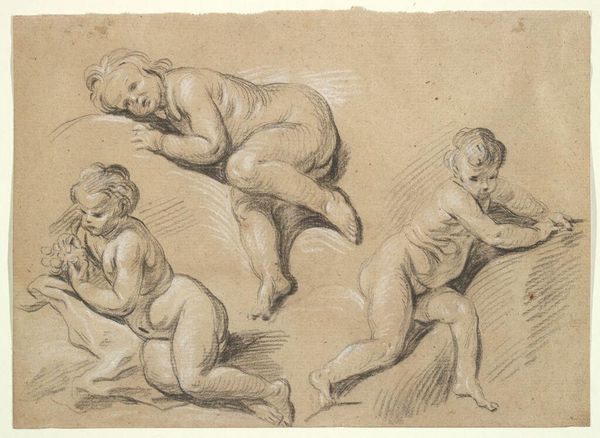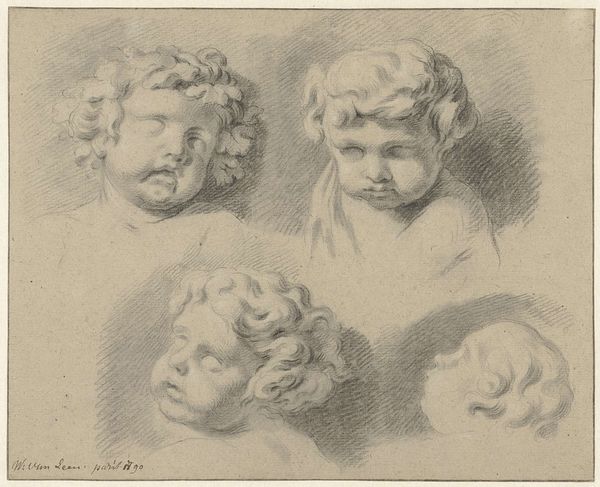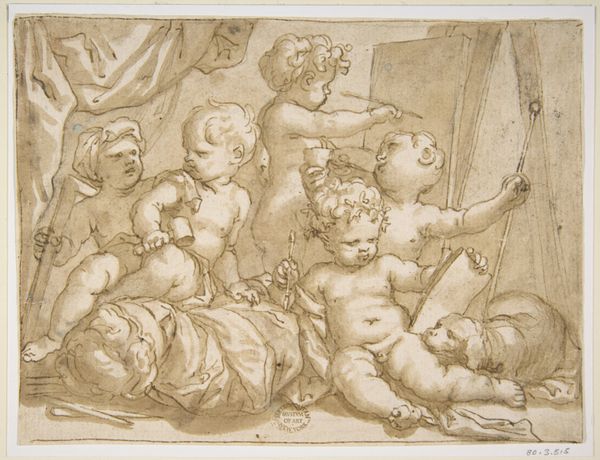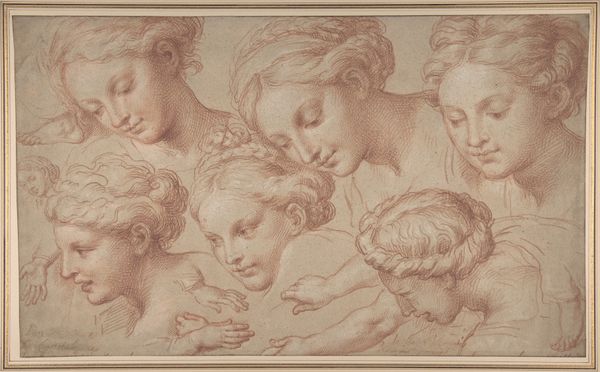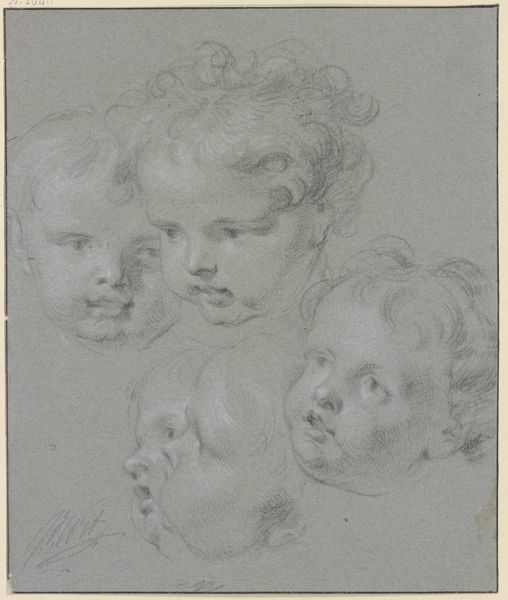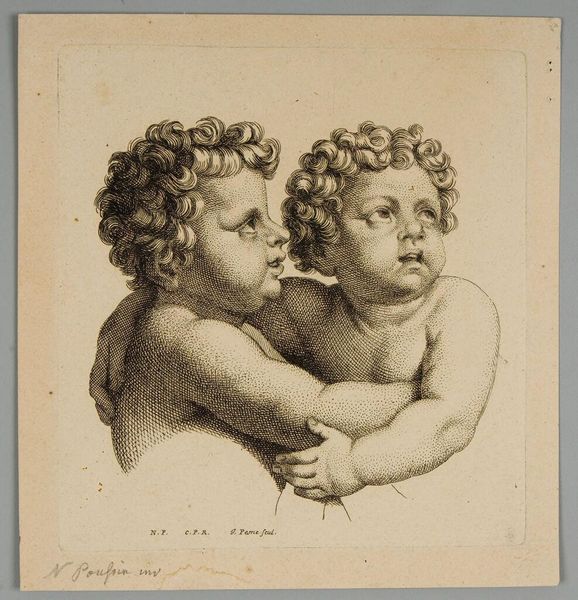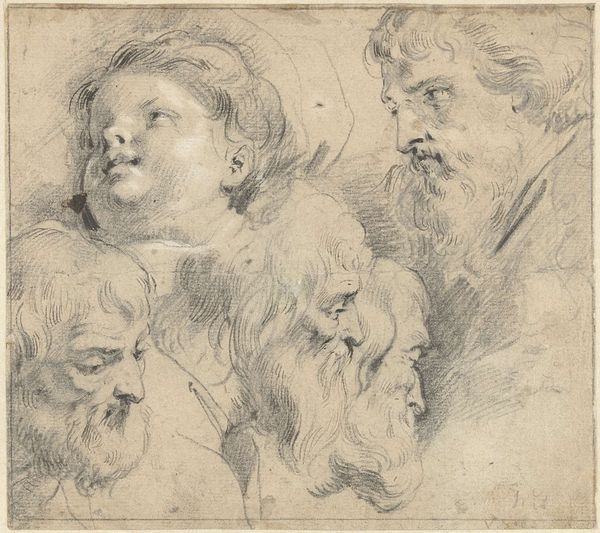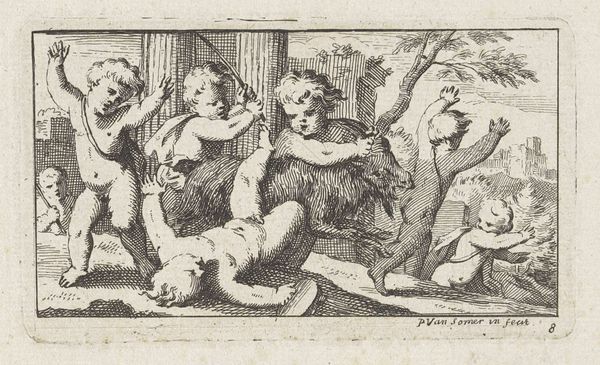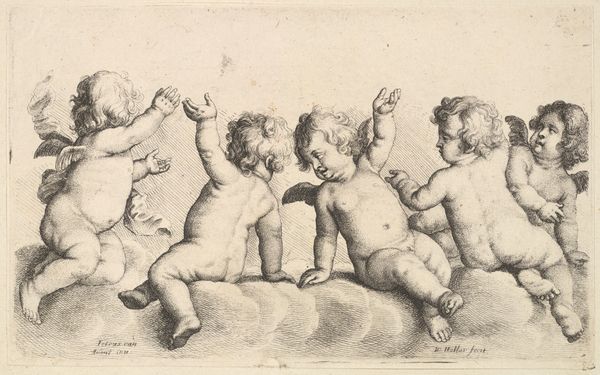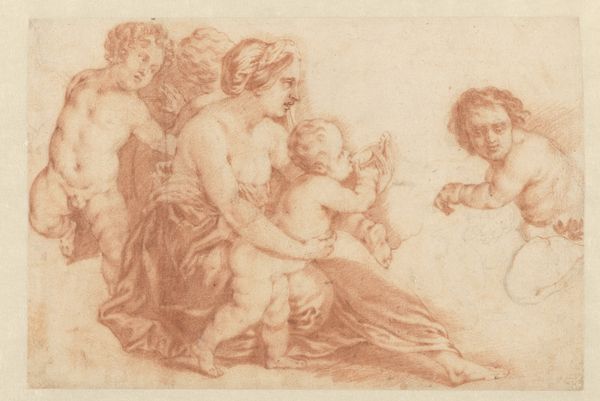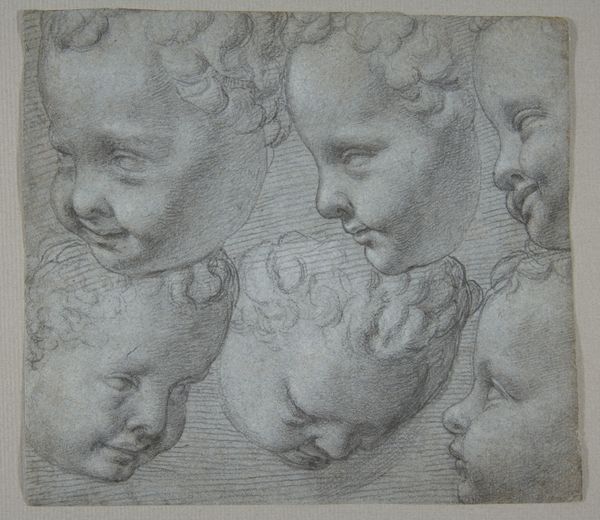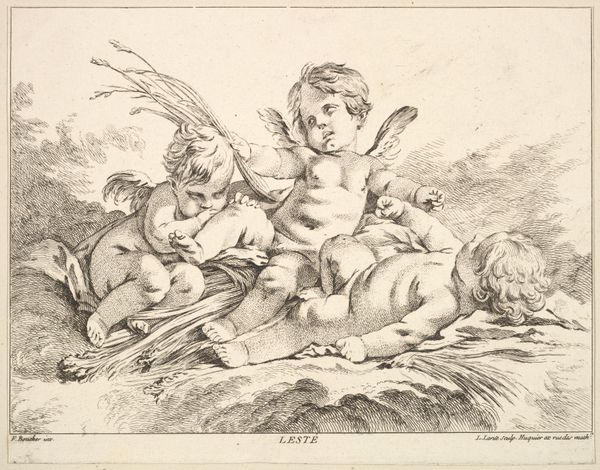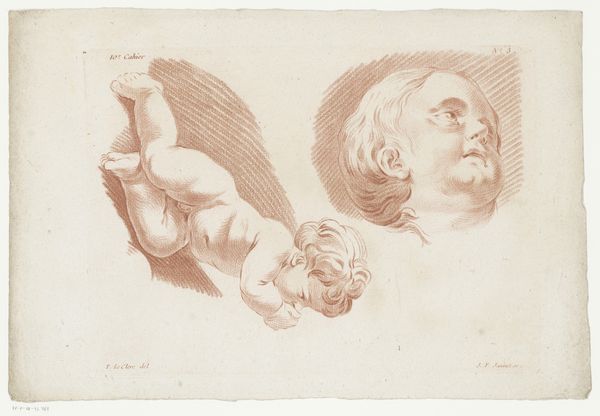
Copyright: CC0 1.0
Curator: This is "Five Children's Heads," etched by Georg Friedrich Schmidt in 1767. It’s part of the collection at the Harvard Art Museums. Editor: My first thought? Pure tenderness. There’s something so raw and vulnerable about these chubby little faces, all squished together. Curator: The piece exists within the context of 18th-century portraiture, where depictions of children became increasingly sentimental, reflecting changing societal views on childhood. Editor: Sentimental, yes, but Schmidt also captures something real here, a sort of chaotic innocence. Not idealized, just very… present. I feel a connection with their vulnerability. Curator: Absolutely. And if we consider the period's social constructs, the innocence of children was often used to reinforce ideas about purity and moral virtue. Editor: So, Schmidt’s etching is both a reflection of its time and, perhaps, a quiet subversion? Seeing humanity beyond the social expectations, just as a feeling? Curator: Precisely. It gives us a glimpse of how societal norms influenced even the seemingly innocent realm of childhood representation. Editor: I think I'll carry that tender feeling with me. It’s a reminder that beauty exists in the messy, imperfect reality of being human.
Comments
No comments
Be the first to comment and join the conversation on the ultimate creative platform.

